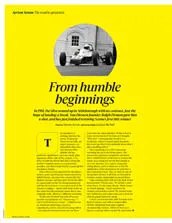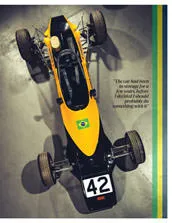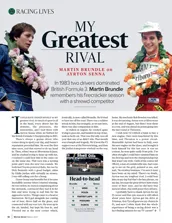Some, such as Senna’s title fights with Alain Prost and Martin Brundle have become established racing legend. Others — with the likes of Peter Koene and Enrique Mansilla — will be new to most Netflix viewers.
Nevertheless, each played a key part in shaping the driver who would ultimately be recognised as a racing hero and one of the best to ever sit behind the wheel of a Formula 1 car.
While we know the tragic end to Senna’s tale, what happened to the Brazilian’s racing rivals? Motor Sport looks back.
Peter Koene
Karting
Peter Koene makes a brief appearance in the new Senna series as one of Ayrton’s early karting rivals. The pair seen battling wheel-to-wheel at the final race of the Karting World Championship at Estoril in 1979.
On-screen, Senna is seen passing the Dutchman — who was also his team-mate at DAP — for the lead on the final lap of the last heat. In reality, the Brazilian’s win was much more dominant. Nevertheless it was a result that he though should have earned him the title, as the pair were tied on points and Senna had been told that the championship would go to whoever finished highest in the final round.
But he was mistaken. Officials used the results of the semi-final, in which Koene had finished fourth and Senna in eighth.
As a result, Koene was rightly crowned champion, but that was seemingly as good as it ever got for the Dutchman, with little record of racing past his world championship success in 1979.
Terry Fullerton
Karting
In 1993, shortly after securing his 41st and final Formula 1 race victory, Senna was asked by the media who he considered his greatest racing rival. The answer was an unexpected one.
“I’d have to go back to 1978, 1979, 1980…when I was go-kart driving,” he said. “I had a team-mate, Fullerton. He was very experienced and I enjoyed very much driving with him. Because he was fast, he was consistent. He was, to me, a very complete driver.”
Fullerton, who makes brief appearances throughout the first two episodes of Senna, had initially burst onto the racing scene in the British Junior Karting Championship, winning consecutive titles in 1966, 1967 and 1968. In 1973, he then became the first Briton to win the Karting World Championship and later raced for the Italian DAP factory team — of which Senna became a member of — from 1978 to 1980.
Terry Fullerton wins 1973 World Karting Championship
The pair had a “good relationship” in their early years according to Fullerton, but things turned sour after he pulled off a gutsy last-lap pass on Senna at Jesolo to win the Champions Cup — a series which, at the time, was second only in importance to the world championship.
“I’d got a good run on him and got up the inside on the way down to the first hairpin,” he told F1.com. “We touched, he went up on two wheels, and I got around the corner without a problem. I looked back and he was maybe 10 metres behind, and all I had to do was finish the lap and I’d won the championship, which I did.











